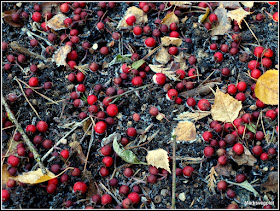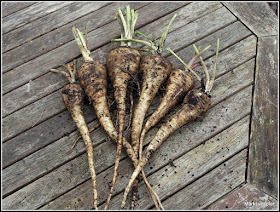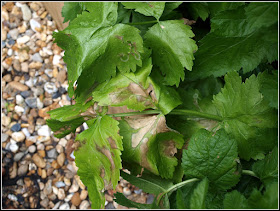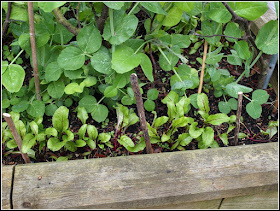I actually like this type of weather. It is certainly preferable to milder but wet and windy weather. Also, as a gardener, I know that cold weather helps my garden. For a start, the plants expect it. Some plants need a period of very cold weather to produce flowers in the following season. If you are unfamiliar with this, have a look into Vernalization. I know too that prolonged spells of very cold weather help to kill off some of the insect and mollusc pests that inhabit our gardens.
Today, the garden is covered in a thick layer of frost, and despite the sunshine our maximum temperature for today is predicted to be 3C. The droopy and hunched-up posture of the Purple Sprouting Broccoli shows me even from a distance that it is mighty cold outside.
The leaves are covered in complex patterns of ice crystals:
 |
| PSB |
 |
| Sage |
 |
| Beetroot |
Funnily enough, although the PSB droops when it gets cold, this Brokali doesn't:
 |
| Brokali |
 |
| Brokali |
Earlier today I went out to feed the birds and to refresh the (frozen) water in the bird-bath, and while I was doing this I was bombarded from above by falling berries from my Cockspur Thorn tree, where a couple of Blackbirds were busy stuffing their beaks. Blackbirds and Pigeons seem to love these berries, but they are messy feeders. Pulling one berry off the tree dislodges three or four others, which fall to the ground below:
For some reason, the birds seldom eat berries that have fallen. These ones will probably remain where they fell.
About a fortnight ago I filled my bird-feeder with seeds for the first time since early Summer. During the warmer months I think it is fair to make / let the birds forage for their food, avoiding over-dependency on artificially-provided fare, but in the Winter I think they deserve some help. I now see a steady stream of little birds coming for a free meal. I was particularly pleased to see TWO Nuthatches feeding together one day - no photos though, because they are very wary birds, very difficult to photograph.




















































